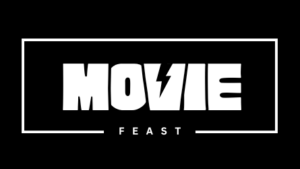The Live Aid: When Rock ‘n’ Roll Took on the World review reveals why this 2025 documentary series masterfully captures one of music history’s most defining moments. This comprehensive four-part series delivers unprecedented access to the stories behind the legendary benefit concert that changed the world.
What happens when you combine unprecedented archival footage with intimate interviews from the biggest names in rock history? You get documentary perfection. Live Aid: When Rock ‘n’ Roll Took on the World (2025), a co-production between CNN and the BBC, stands as the definitive examination of July 13, 1985—the day rock music took on global poverty and won. This exhaustive documentary series follows the incredible journey from Bob Geldof’s initial vision to the simultaneous concerts at Wembley Stadium and JFK Stadium that reached 1.9 billion viewers worldwide. While the series operates on familiar music documentary territory, it succeeds because it treats every participant with complete respect—every moment of triumph and behind-the-scenes chaos feels genuinely revelatory.
Synopsis
Forty years after July 13, 1985, this multi-part documentary series revisits a turning point in rock music history, exploring how one of the largest global music events in history raised money for famine relief in Africa. The series chronicles the monumental undertaking that brought together superstars from Queen and U2 to Madonna and Phil Collins, all united by a single goal: ending the Ethiopian famine.
Featuring new interviews with former Prime Minister Tony Blair, Bono, former President George W. Bush, Phil Collins, Patti LaBelle, President Olusegun Obasanjo, Condoleezza Rice, Lionel Richie, and Sting, the documentary provides unprecedented access to the political and musical figures who made Live Aid possible. The series follows the complex logistics of organizing simultaneous concerts across two continents while exploring the deeper cultural impact of rock stars becoming global activists.
Plot & Themes
Live Aid: When Rock ‘n’ Roll Took on the World operates on a deceptively complex premise: sometimes the most powerful political statements come from the most unlikely sources. The benefit concert framework serves as a vehicle for exploring deeper questions about celebrity activism, media responsibility, and the power of music to create social change.
The series’ genius lies in its refusal to present Live Aid as a simple success story. When the documentary explores the logistical nightmares and personality conflicts that threatened to derail the entire event, it never diminishes the ultimate achievement. These moments work because the filmmakers understand that the most inspiring stories often emerge from the most chaotic circumstances.
Thematically, the documentary celebrates the transformative power of collective action while acknowledging the complex politics of international aid. The series doesn’t just chronicle a concert—it examines how a single day fundamentally changed the relationship between popular culture and global activism.
Cinematography & Visuals
The documentary’s visual approach perfectly balances archival footage with contemporary interviews. The cinematography emphasizes the scale and spectacle of the original concerts while maintaining intimate access to the personalities who made it happen. Modern interview segments are shot with elegant simplicity that never competes with the historical material.
The series excels in presenting the concert footage with remarkable clarity. The restoration of 1985 performances demonstrates meticulous attention to detail, allowing viewers to experience Queen’s legendary 20-minute set and U2’s breakthrough performance as if watching them for the first time.
Behind-the-scenes footage rewards multiple viewings. During the backstage sequences, attentive viewers will spot numerous interactions between superstars that reveal the genuine camaraderie and competitive tension that drove the event’s success.
Interviews & Archival Material
The documentary’s strength lies in its unprecedented access to key participants. Bob Geldof’s candid recollections provide the emotional backbone of the series, while interviews with surviving performers offer insights that have never been shared publicly.
Political figures including Tony Blair and George W. Bush provide crucial context about the international response to the Ethiopian famine, while musical legends like Bono, Phil Collins, and Sting offer intimate perspectives on the pressure and excitement of performing for the largest audience in television history.
The archival material demonstrates extraordinary research. Previously unseen footage from both venues creates a comprehensive picture of the day’s events, while contemporaneous news reports capture the global excitement and skepticism that surrounded the unprecedented broadcast.
Direction & Storytelling
The documentary’s direction maintains perfect pacing throughout the four-part structure. The filmmakers understood that music documentaries require careful balance between performance footage and contextual storytelling. Every interview segment serves the larger narrative without sacrificing individual personality.
The storytelling approach layers historical context at multiple levels:
- Musical performance analysis that explains why certain sets became legendary
- Political background that contextualizes the Ethiopian famine within Cold War dynamics
- Technical storytelling that demonstrates the logistical miracle of coordinating global broadcasts
- Cultural examination that explores Live Aid’s lasting impact on celebrity activism
The series’ structure follows chronological conventions while subverting them through thematic organization. This creates narrative momentum that makes the four-hour runtime feel engaging rather than exhausting.
Sound & Music
The documentary’s audio restoration deserves particular recognition. The original Live Aid performances have been remastered with remarkable clarity, allowing viewers to experience the concerts’ audio quality as never before. Each performance segment maintains the authentic atmosphere of the original broadcasts.
The series uses silence effectively during emotional moments. Key interviews about the Ethiopian famine and its human cost are allowed to breathe without musical manipulation, trusting audiences to process the humanitarian crisis through authentic testimony.
Contemporary music choices enhance rather than overwhelm the historical material. The documentary’s score supports the narrative without competing with the iconic performances that form the series’ emotional core.
Conclusion & Verdict
Live Aid: When Rock ‘n’ Roll Took on the World succeeds because it treats its subject with the complexity and respect it deserves. Every element—from archival research to contemporary interviews to technical restoration—works in service of comprehensive storytelling without sacrificing emotional impact.
Strengths:
- Unprecedented access to key participants and previously unseen footage
- Excellent balance between entertainment value and historical significance
- Remarkable technical restoration of 1985 concert footage
- Thoughtful examination of celebrity activism and its effectiveness
Minor Weaknesses:
- Some contemporary context may feel overwhelming for viewers seeking pure concert footage
- Four-part structure occasionally feels repetitive across episodes
This documentary series remains essential viewing for music history enthusiasts and anyone interested in the intersection of popular culture and global activism. Live Aid: When Rock ‘n’ Roll Took on the World works for audiences who enjoyed The Beatles: Get Back, Summer of Soul, or Woodstock.
Rating: 8.5/10
Producers: CNN Films, BBC Studios
TV Rating: TV-14
Featuring: Bob Geldof, Bono, Phil Collins, Sting, Tony Blair, George W. Bush, Condoleezza Rice, Lionel Richie
For more music documentary reviews, check out our analysis of other historical concert films. You can also explore the series’ archival footage at the Internet Movie Database.


